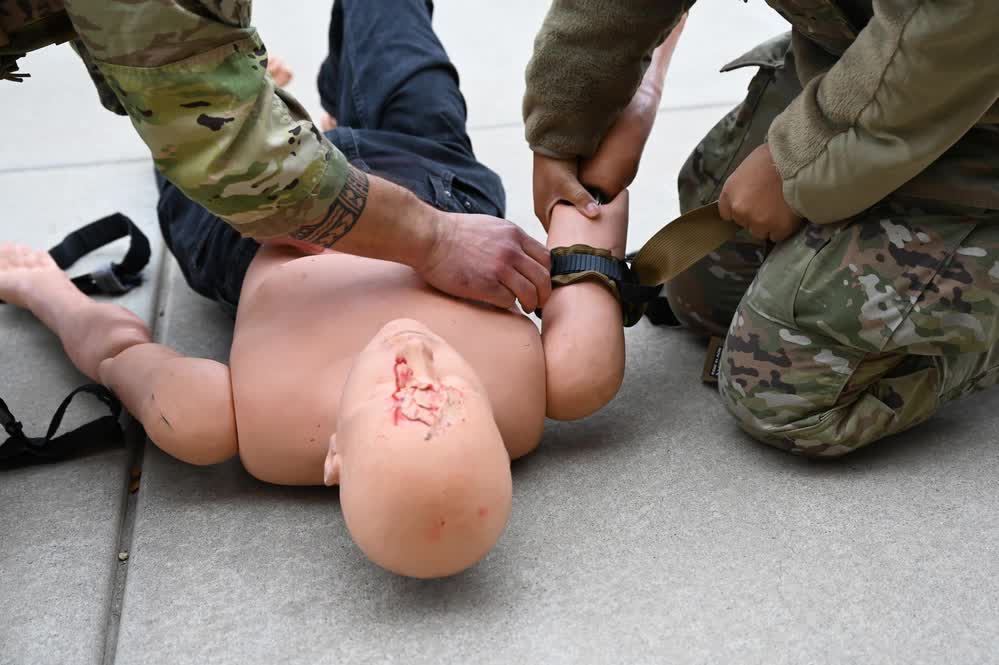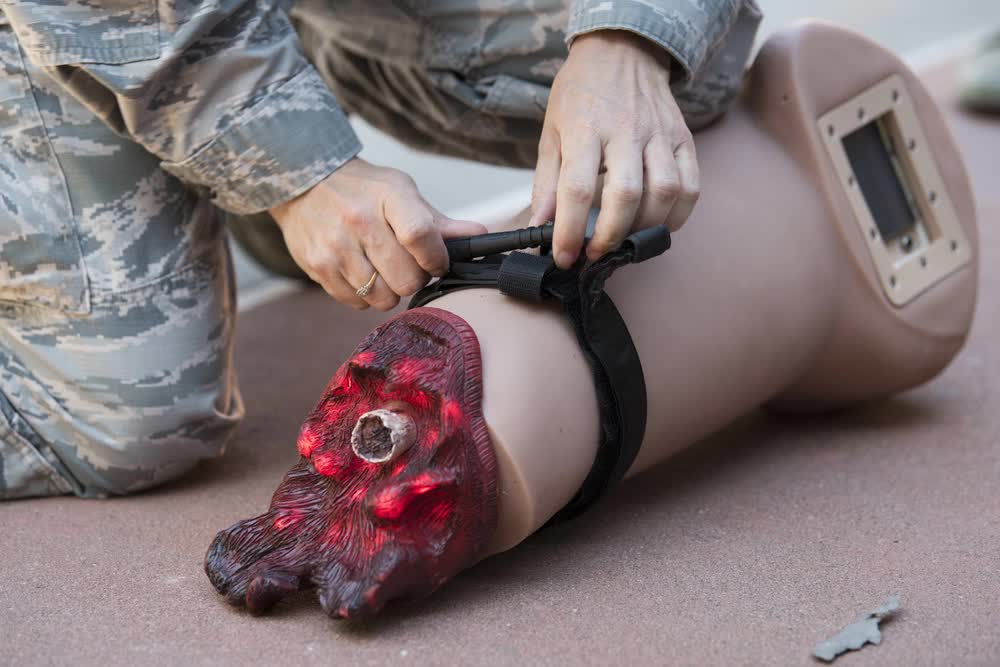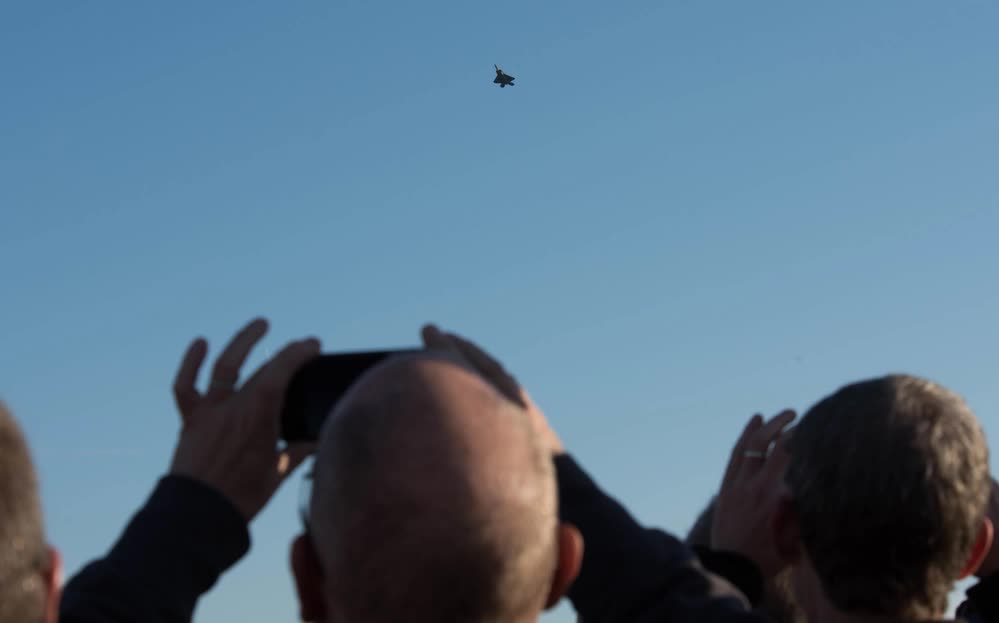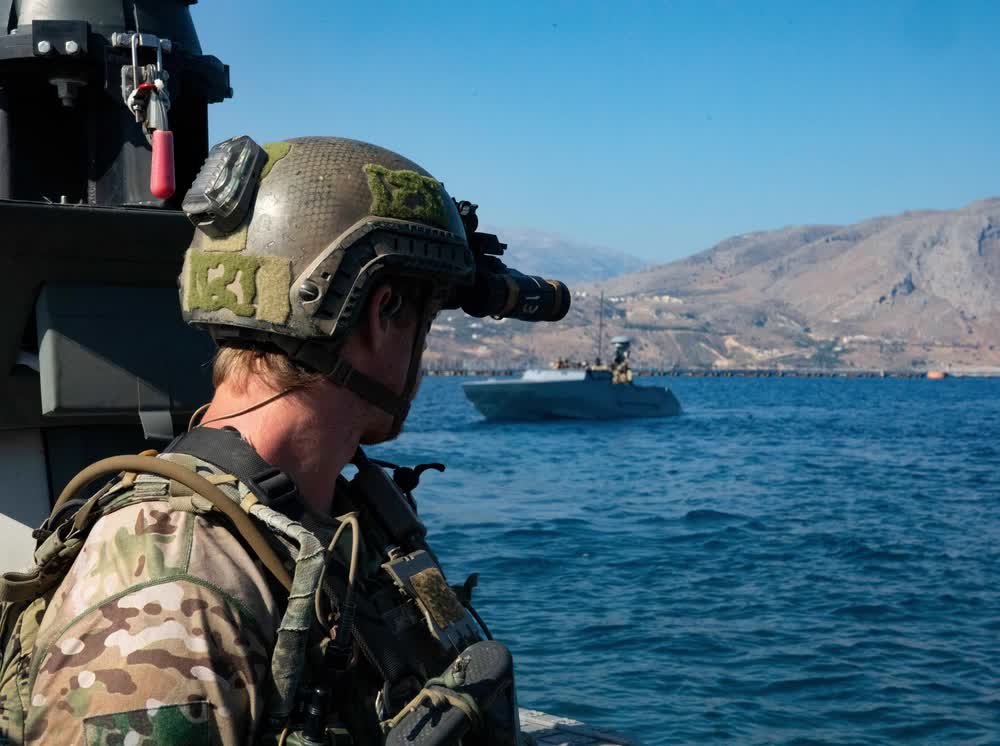Once forbidden and feared, tourniquets save the life of 15-year-old shark attack victim
- By Frumentarius
Share This Article

A recent shark attack on a Walton County beach in Florida had a happy ending. Neither victim of the multiple attacks on County Road 30A succumbed to their wounds. The actions of first responders, and vacationing doctors and nurses, no doubt resulted in saving the life of young Lulu Gribbin (15), who lost both a leg and hand to the shark.
Though they might not know it, Lulu and her family were also the beneficiaries of nearly 30 years’ worth of effort to make tourniquets more readily available to those Americans on battlefields and later, beaches, who most need their life-saving capabilities. That effort is known collectively as Tactical Combat Casualty Care (TCCC), the proponents of which have revolutionized battlefield medicine in the last almost-three decades. Perhaps most notably, they have dragged tourniquet use from the forbidden realm of feared and often-prohibited medical intervention to its current rehabilitation as a ubiquitous life-saving bleeding control measure.
As detailed in media accounts, Lulu’s right leg was severely wounded in the attack, causing it to later need surgical amputation, and one of her hands was bitten off by the shark. Such wounds can quickly lead to a life-threatening loss of blood in mere minutes and EMTs who quickly arrived at the scene of the attack recognized the bleeding’s life-threatening nature. Along with the vacationing nurses and doctors on scene, they stopped the bleeding through the application of tourniquets to both the affected arm and leg.
Those EMTs likely carried the tourniquets in their ready trauma bag for emergencies. Had they even needed to run back to an ambulance parked up on the road to grab the tourniquets, it is possible Lulu would not have survived. The EMTs’ training and readily available tourniquets made all the difference. Thirty years ago, such a rapid and effective response would likely and tragically not have been the case.
Related: Delta Force’s approach to medical training

A similar attack in Pensacola, Florida, back in 2001, in which a young Mississippi boy named Jesse Arbogast lost an arm to a shark bite, resulted in the victim suffering extensive and irreversible brain damage from his extensive blood loss. While no press reports from the time state whether a tourniquet was applied to Jesse’s amputated arm, considering that exactly zero tourniquet uses were shown in the civilian prehospital data for the years 2008 and 2009, it is highly unlikely that responding EMTs applied – or even carried – a tourniquet in 2001.
In an even more tragic example, in 2003 a woman named Robyn Gardner had her thigh ripped open by a boat propeller in California. A nearby former Army medic applied a tourniquet he was carrying, which stopped the bleeding and stabilized Gardner. However, when EMTs arrived and applied their 2003 prehospital trauma training to their patient, they removed the tourniquet because they had been taught that it was a potentially harmful bleeding-control measure to be avoided. Instead, they relied on other techniques to try to stop the bleeding as per their training at that time. Those measures did not work and Gardner died as a result of her wounds. She sadly never had the chance to suffer potential (and non-life threatening) tissue damage.
As documented in the book Tell them yourselves: It’s not your day to die (co-written by Doctors Frank Butler and Kevin O’Connor, as well as by this author), tourniquets were thought for decades to be too hazardous to use on patients suffering severe arm or leg bleeding. This was due to an exaggerated fear in the medical world of the potential tissue damage that could be caused by the tourniquet. What eventually led to the change in that thinking was the realization by some in the American military medicine community in the mid-1990s that the U.S. military lost over 3,000 service members in Vietnam to preventable blood loss from arm and leg wounds. That is worth stating again: over 3,000 Americans could have come home from that war if they had had a simple tourniquet applied to their wounds.
Related: Navy SEAL doctor speaks about the peculiar dangers of Hell Week

What followed was a four-year review of battlefield trauma care in the U.S. military, followed by the development and implementation of TCCC starting in 1996. It would take nearly 20 more years for an assorted collection of intrepid and determined medical professionals in both military and civilian medicine to eventually convince the rest of the world that tourniquets were not only safe if used properly, but critical to saving lives. It was not until 2013 that civilian tourniquet use started to increase significantly in the American Emergency Medical Services community.
That year, a group of medical experts convened in Hartford, Connecticut, in the wake of the Sandy Hook shootings to try to figure out how to save lives in mass casualty incidents. The Hartford Consensus, as it would come to be known, led to the medical establishment endorsing tourniquet use by civilian first responders (EMTs, police, and fire). Since then, Emergency Medical Services (EMS) systems all across America have adopted their use and incorporated them into their bleeding control measures, resulting in many lives saved in shootings, car wrecks, and yes, shark attacks. That all resulted from the effort started in the U.S. military.
While there are still many EMS systems in America that do not emphasize or even endorse tourniquet use for their first responders treating life-threatening bleeding in arms and legs, clearly the EMS system in Walton County, FL, does so. As a result, young Lulu Gribbin gets to live the rest of her life. For that, we should all be grateful.
Read more from Sandboxx News
- China was spotted using mock-ups of American stealth fighters to train its pilots
- Video: DARPA’s newest X-Plane has been unveiled
- Upgrade aims to slim down the insanely heavy Abrams tank
- Hotchkiss Type Universal aimed to become a paratrooper’s best friend
- 5 books about US special operations forces that should be made into movies
Related Posts
Frumentarius
Frumentarius is a former Navy SEAL, former CIA officer, and currently a battalion chief in a career fire department in the Midwest.

The night when police and Delta Force men patrolled the streets of New Orleans

Drones swarmed a military base for days and the Pentagon still doesn’t know why

Video: Did the Air Force use F-117 Night Hawks to attack ISIS in 2017?

